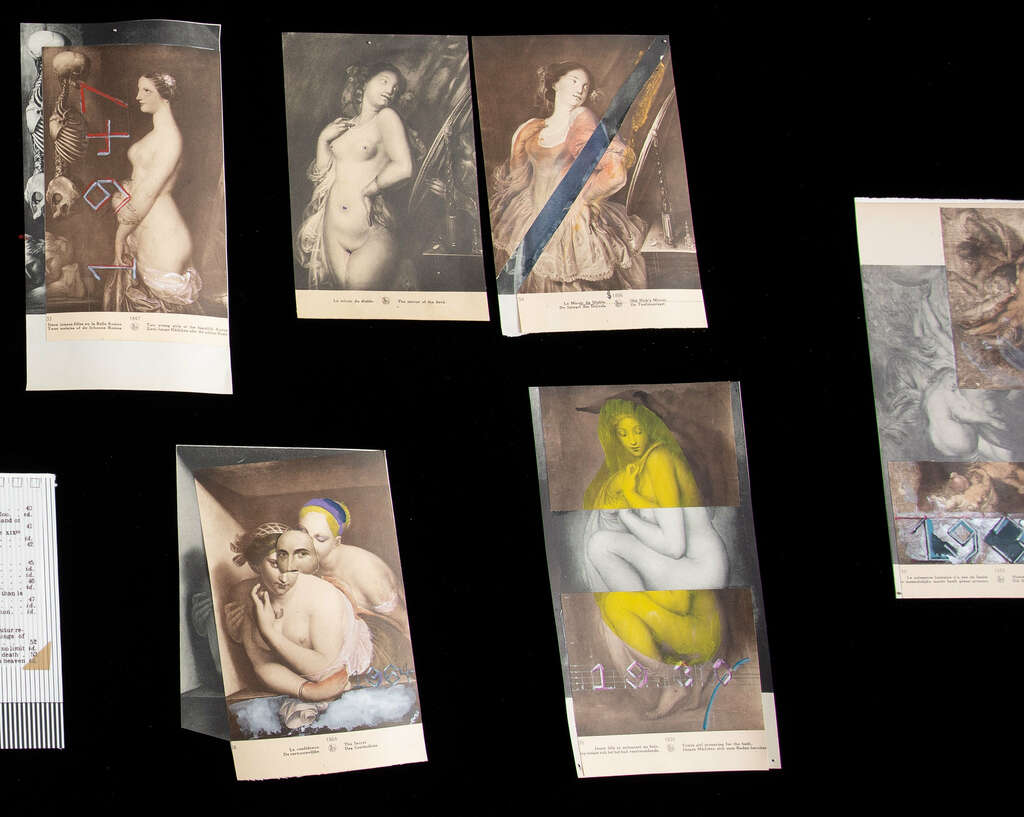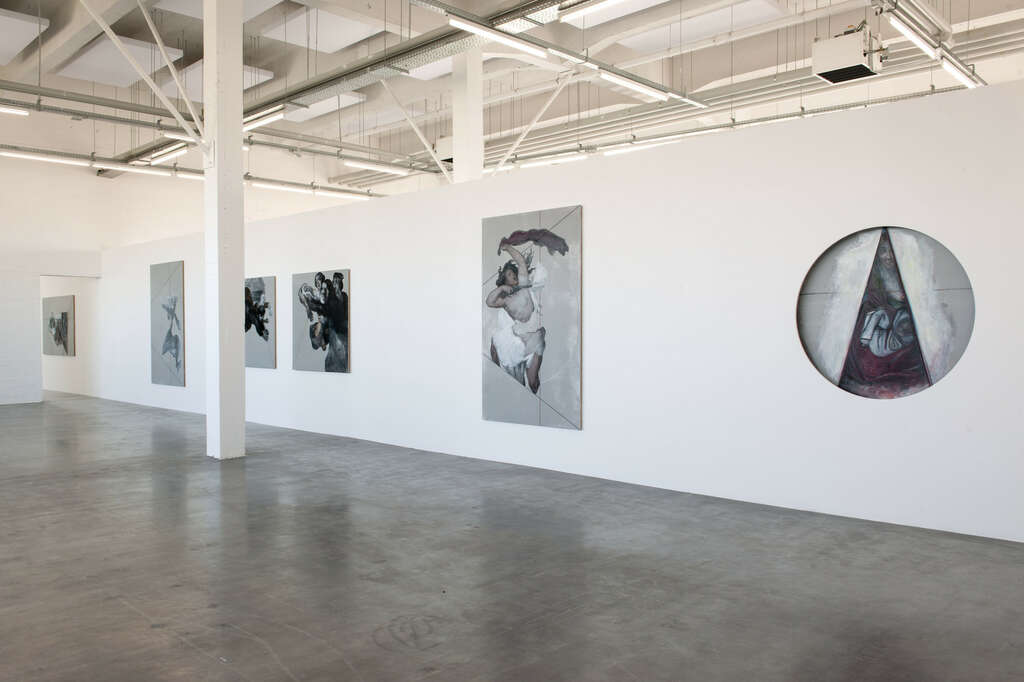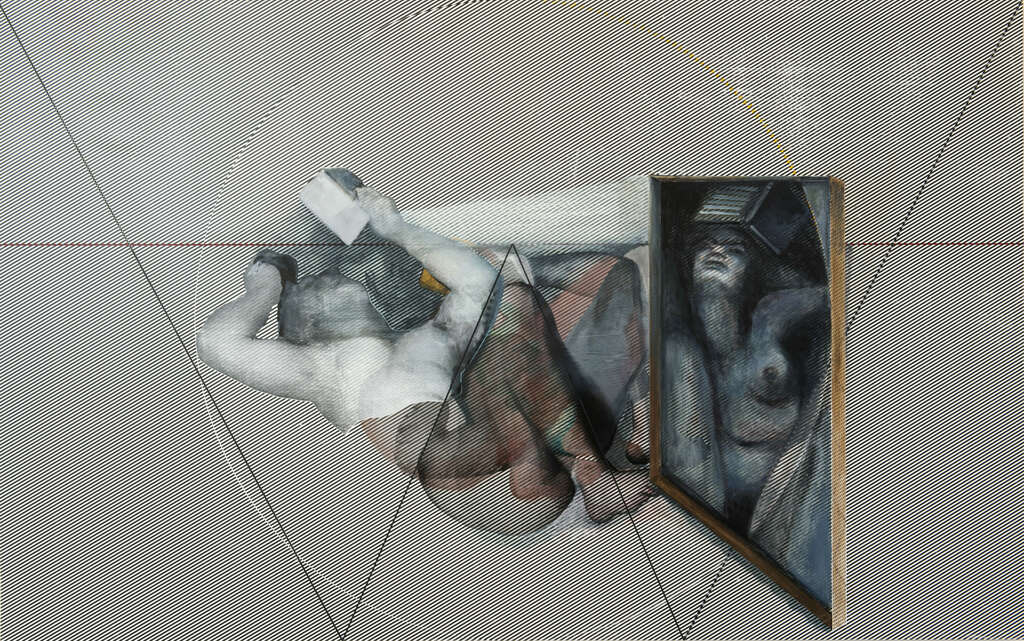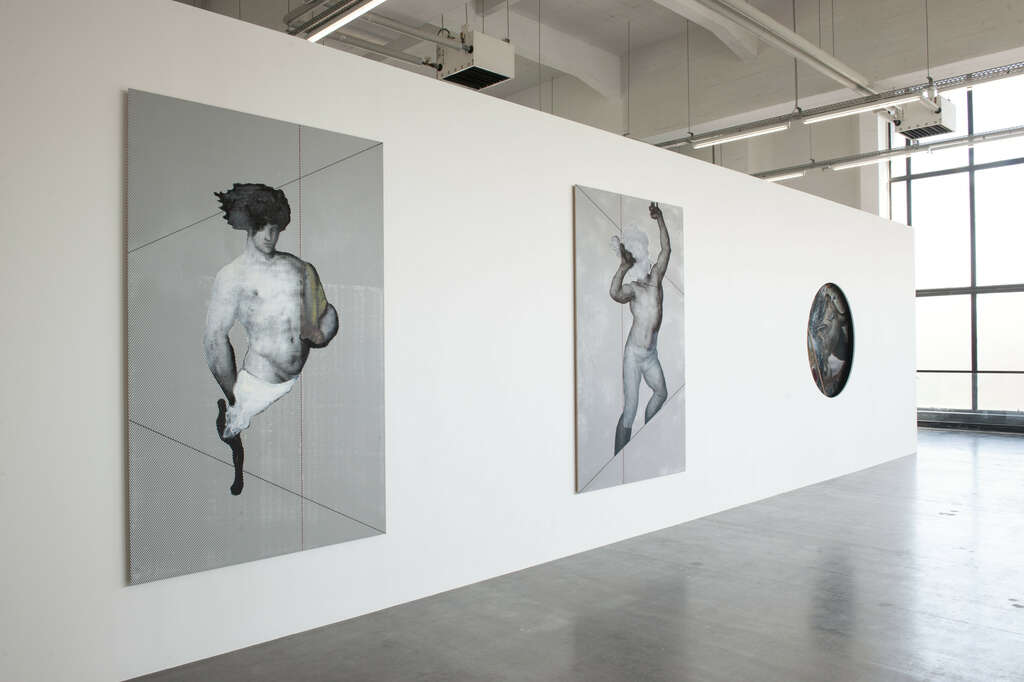R. H. Quaytman
Modern Subjects, Chapter Zero
As part of a research into the artistic history of Brussels, artist R. H. Quaytman visited the Wiertz Museum. Who was Antoine Wiertz (1806-1865), and why did he turn his studio into a museum? Why did he choose to paint remarkably emancipatory scenes of women in distress on a monumental scale, as well as other gruesome depictions of poverty, war, and suicide?
Watch and listen to additional videos and sounds around R. H. Quaytman's exhibition at WIELS: MIXED MEDIA
R. H. Quaytman reinvents the production of pictorial images in today’s digital age, reinstating them within the context of art history and of painting in particular, reasserting their materiality and spiritual scope, and deconstructing prevailing narratives from a feminist and intersectional point of view. The artist's strategies are pictorial, photographic and conceptual, leading to the development of complex groups of works titled as chapters. Composing each exhibition in relation to a local reference, Quaytman builds the series as a narrative structure that shapes the overall organisational principle and the mode of execution of the individual works.
"The choice of [Antoine Wiertz’s] subject matter suggests a revolutionary ideological orientation supporting the emancipation of women and the poor, and placing the blame at the feet of the military, the state and the rich — although his works on these subjects are displayed to the side of his gargantuan attempts to attain La Gloire."
For this monographic exhibition at WIELS, R. H. Quaytman explores Brussels’ artistic history and, more specifically, the relationship to power of some of the artists with whom the artist shares an affinity, such as Magritte and Broodthaers. In preparatory research, Quaytman came across the painter Antoine Wiertz and his personal museum, which is now nestled in the heart of the European Quarter. With its unique and spectacular hanging, this museum bears witness to the golden age of monumental painting, which was in the throes of decline in the face of photography and film. Wiertz sought to compensate for this waning with an overabundance of moralising subjects condemning injustice and inequality. He depicted chilling scenes of poverty, war, suicide, or cholera.
Now all but forgotten, Wiertz’s work and exuberant museum-sanctuary provide a starting point for Quaytman’s investigation into the possibilities of painting in the context of the photographic image, seen through the prism of Wiertz’s work, which teems with suggestive male bodies while displaying a genuine empathy for the condition of women.
Curators: Devrim Bayar & Dirk Snauwaert
Related Events

Look Who's Talking: Devrim Bayar (FR)

Bart Verschaffel - Political (?) Art: the Antoine Wiertz case (EN)

Conversation between Deputy Prime Minister Petra De Sutter & R. H. Quaytman (EN)

Conversation entre Rhea Anastas et R. H. Quaytman (EN)
Mixed Media
Watch and listen to additional videos and sounds around R. H. Quaytman's exhibition at WIELS.




